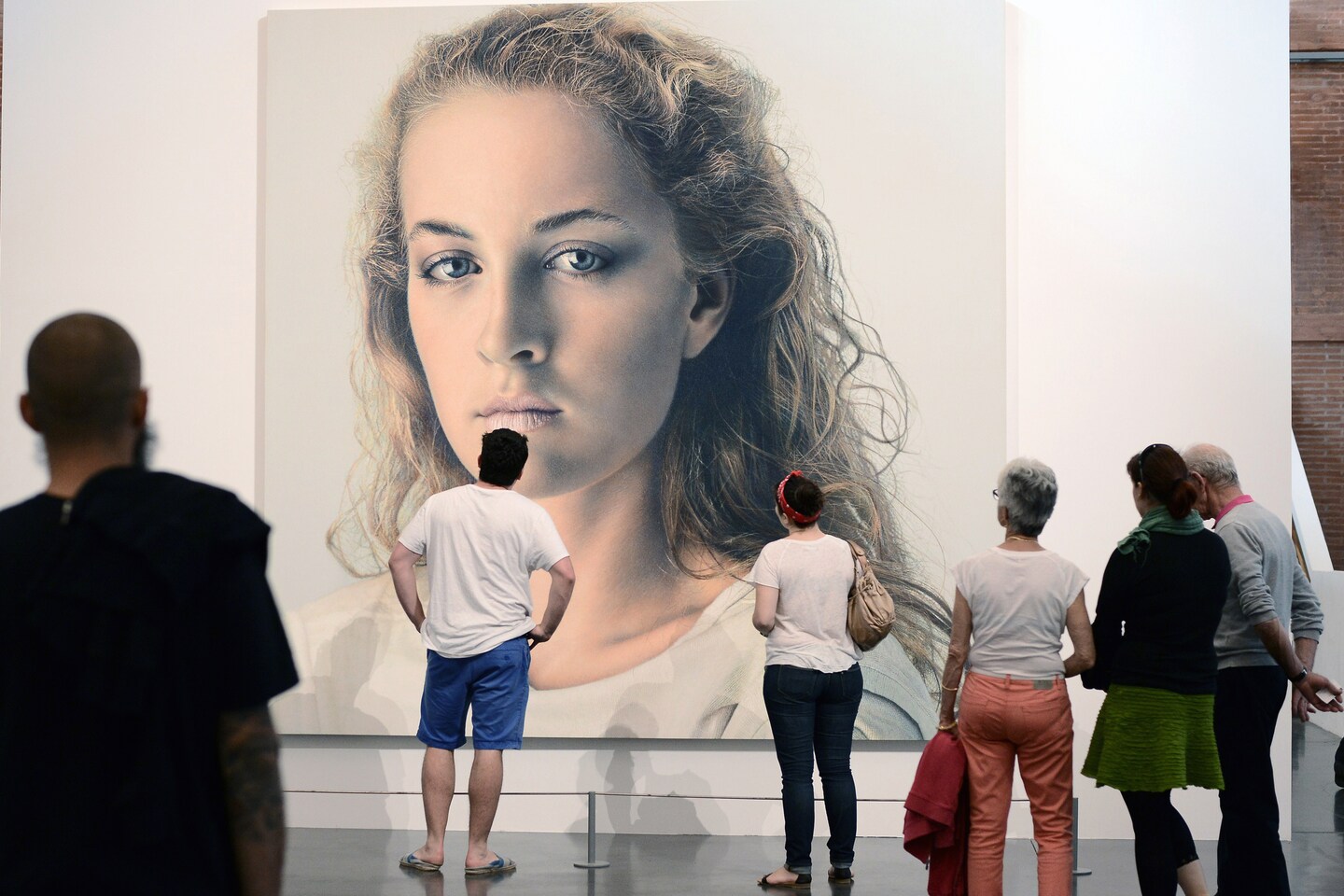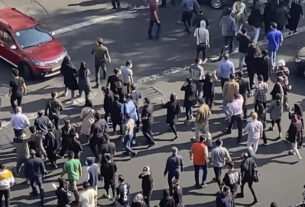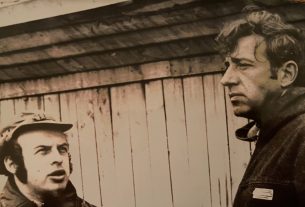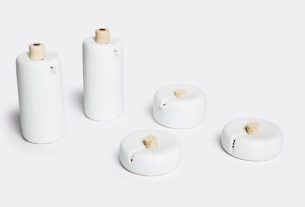Over more than five decades, Mr. Gertsch explored painterly and printmaking techniques to re-create photographs into large-scale works — some 11-by-16 feet or more — that were rendered in meticulous detail and could take more than a year to complete, sometimes moving ahead at only a postcard-size portion each day.
His works have been exhibited around the world and one piece, “Luciano II,” a more than 7-by-11-foot acrylic painting of his friend, artist Luciano Castelli, sold for more than $3 million in 2017.
Mr. Gertsch’s mastery at photorealism also intertwined with a photojournalist’s sensibility of storytelling. “If a picture has no spiritual background, it has no secret, no magic, no soul,” he once told the Swiss arts and culture magazine Du.
While other photorealism painters such as Richard Estes and Ralph Goings favored images such as gleaming diners or glassy street scenes, Mr. Gertsch first gained attention as an observer of the Swiss counterculture. In the early 1970s, Mr. Gertsch took documentary-style snapshots among gender-fluid members of an artists’ commune, including Castelli, that became the basis for a 1974 exhibit that shook up the then-staid art scene in Lucerne, Switzerland.
Mr. Gertsch called them “situation portraits” — a series that includes Castelli and other androgynous friends applying makeup and getting ready for a party. A cartoonlike butterfly, a sticker on a wall, seems to float through one scene. The paintings, done in a pointillism style, shimmered with the high-contrast pop of a flash photo or an instant Polaroid.
“It was like seeing the past restored as a parallel present, through the almost hallucinatory precision of a photograph enlarged to an enormous scale and the neon-like colors,” wrote Geneva-based artist Mai-Thu Perret in a 2004 essay in the arts website Frieze.
Timothy Leary, a former Harvard professor who became the “turn on, tune in, drop out” guru of LSD, was introduced to Mr. Gertsch’s work while living in Geneva in 1971, calling it “a new art form” that was as “threatening and rapturous as any new vision of reality.”
In 1975, Mr. Gertsch became beguiled by Robert Mapplethorpe’s photo of Smith, staring confidently at the camera in a crisp white shirt, on her debut album “Horses.”
“It was her face which first fascinated me,” said Mr. Gertsch.
Mr. Gertsch was on hand with his Nikon camera in 1977 when Smith performed at an event in Cologne, Germany, to commemorate the 19th century surrealistic poet Arthur Rimbaud. A year later, Mr. Gertsch invited Smith to his studio for a round of portraits.
The photos were turned into some of Mr. Gertsch’s most celebrated works, a five-painting series that indelibly connected his visual legacy to the 1970s punk scene and the styles and energy of the moment. Mr. Gertsch treated Smith not as an icon, but as part of a larger tableau of music as a business and insular bubble.
He shows Smith crouching in front of stage amps with her back to the camera or hovering, waiflike, at the edge of a scene or in front of towering microphones. In “Patti Smith V,” Mr. Gertsch’s painting finished in 1979, she is seated and gesturing with her hands as if struggling to make a point.
Instead of singing, she used the microphone to talk about her dreams as a young girl to one day become a muse for an artist.
“Paint the world,” Mr. Gertsch said, “like someone who has just landed on the mountain from some other planet.”
Franz Gertsch was born March 8, 1930, in Mörigen on Switzerland’s Lake Biel as the only child of a father who taught grade school and a mother whose family owned a local restaurant.
Mr. Gertsch dropped out of school to pursue painting, taking some classes at a school in Bern run by abstract-impressionist painter Max von Mühlenen. After being discharged from mandatory Swiss military service because of a heart ailment, Mr. Gertsch traveled to places such as Paris, Scotland and Italy to experiment in various visual styles, including wood cuts and collages.
In 1969, he finished his first large-scale painting based on a photograph, “Huaa…!,” a galloping rider with saber raised from a still from the 1968 film “The Charge of the Light Brigade.”
His 1970 “Portrait of Urs Lüthi” shows the subject in a blue blazer and sunglasses, sitting next to a camera. Critics described it as a modern take on a Dutch still life. “Medici” in 1971 became a time capsule for the era — with five young men, their hand flowing and bell bottoms swaying, leaning on a barricade.
He abandoned the photo-based style in the mid-1980s to exclusively pursue intricate woodcut prints using tiny holes filled with pigments. The work, printed on large sheets of handmade Japanese paper, produced a gauzy effect in which images, such as portraits or plants, float in a monochromic wash of red, green or other colors.
Some critics saw his prints as too antiseptic and clinical. “Gertsch may work with pear wood and the finest handmade papers, but his pictures taste of metal,” said a 1990 review in The Washington Post of nine prints at the Hirshhorn Museum and Sculpture Garden. “The making of his portraits is like the making of machines.”
Mr. Gertsch later returned to photo-based paintings, including many depicting landscapes and nature. His four-painting series, “The Four Seasons,” showed the changing light and environs over a year on a sloping woodland near his house and studio in Rüschegg, Switzerland.
His attention to the original photo was so precise that the land and leaves closest to the frame were slightly blurred to reflect the imperfections in a camera’s depth of field.
In a 2011 oral history, Mr. Gertsch said his shifting artistic styles were made on “intuitive” feelings about where to go next. “I didn’t do all of that with my head,” he said.
Mr. Gertsch is survived by his wife of 59 years, Maria Meer, and five children.
In 1999, Mr. Gertsch wrote an epilogue to the book “Franz Gertsch, Silvia: Chronicle of a Painting” by Norberto Gramaccini and Steven Lindberg. Mr. Gertsch said painters have always faced a crossroads.
“Is painting’s exclusive purpose to refer to itself, or would it be better advised to deal with reality?” he wrote. “I chose the radical way: reality as painting.”



